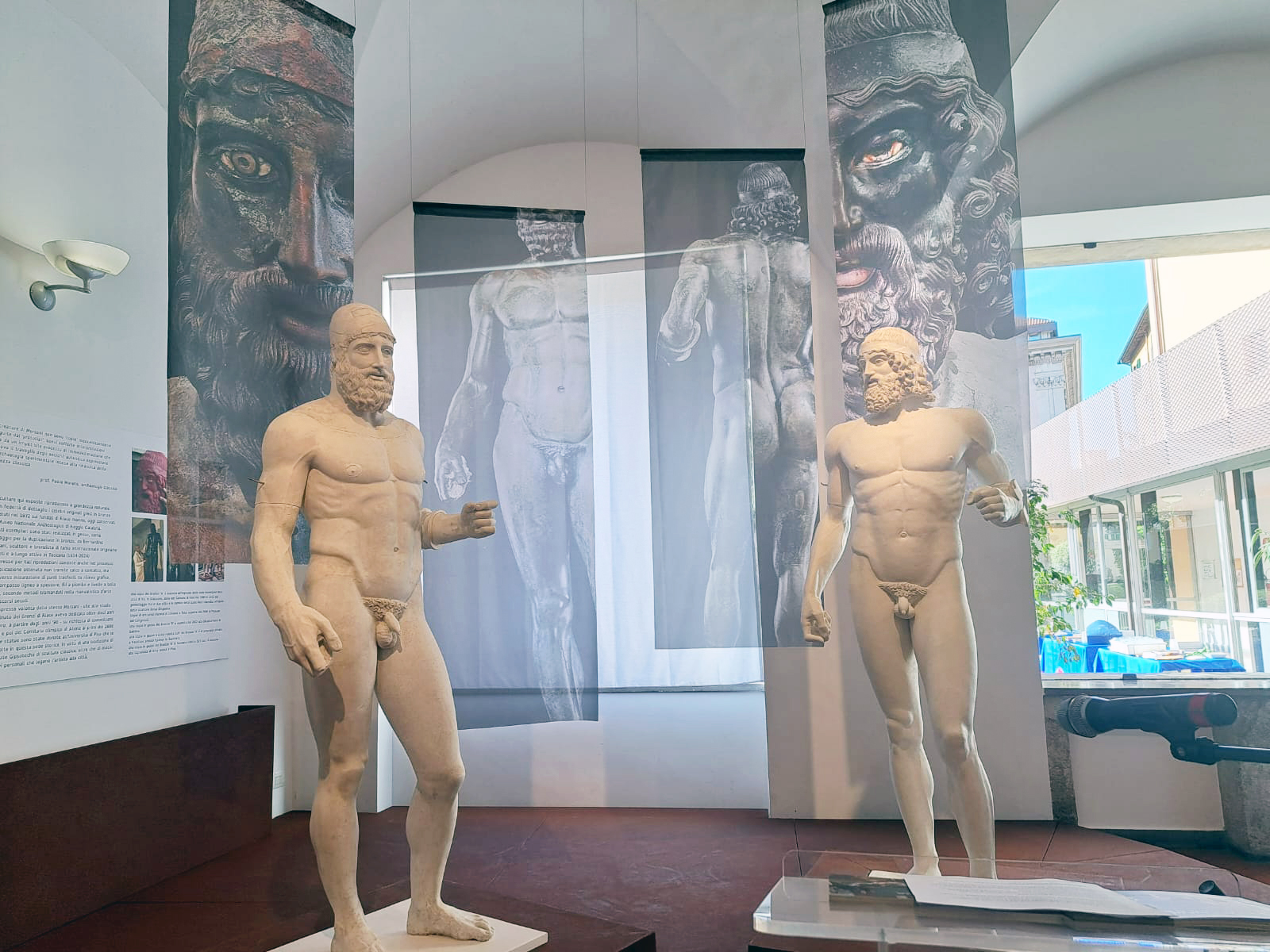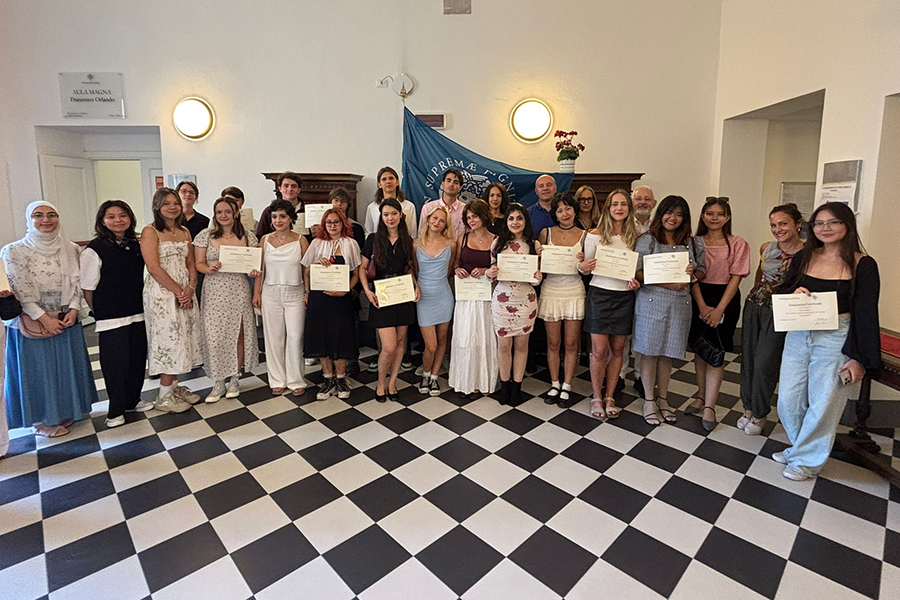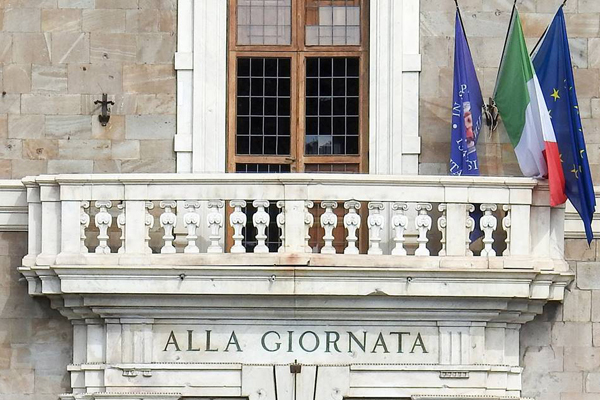On Friday, 30 May at 5:30 p.m., the exhibition I Guerrieri di Riace a Pisa was inaugurated at Palazzo Vitelli, the building on Lungarno Pacinotti that houses the administrative headquarters of the University of Pisa. The sculptures on display are life-size, faithfully detailed replicas of the famous Greek bronze originals discovered in 1972 on the seabed off Riace Marina. These originals are now preserved in the National Archaeological Museum of Reggio Calabria. The pieces were originally crafted in plaster as preparatory models for their subsequent casting in bronze by Bernardino Morsani (1934–2024), an internationally acclaimed sculptor and bronze artist from Rieti, whose long career was closely tied to Tuscany.
The uniqueness of these reproductions also lies in the duplication process, which was not carried out through direct contact moulding, but rather by transferring measured points onto a graphic relief using traditional tools such as a wooden thickness calliper, plumb lines, and spirit levels. This method follows techniques handed down through art manuals from past centuries. Morsani dedicated over ten years to an in-depth study of the Riace Bronzes, and it was at his behest that the two statues were donated to the University of Pisa.
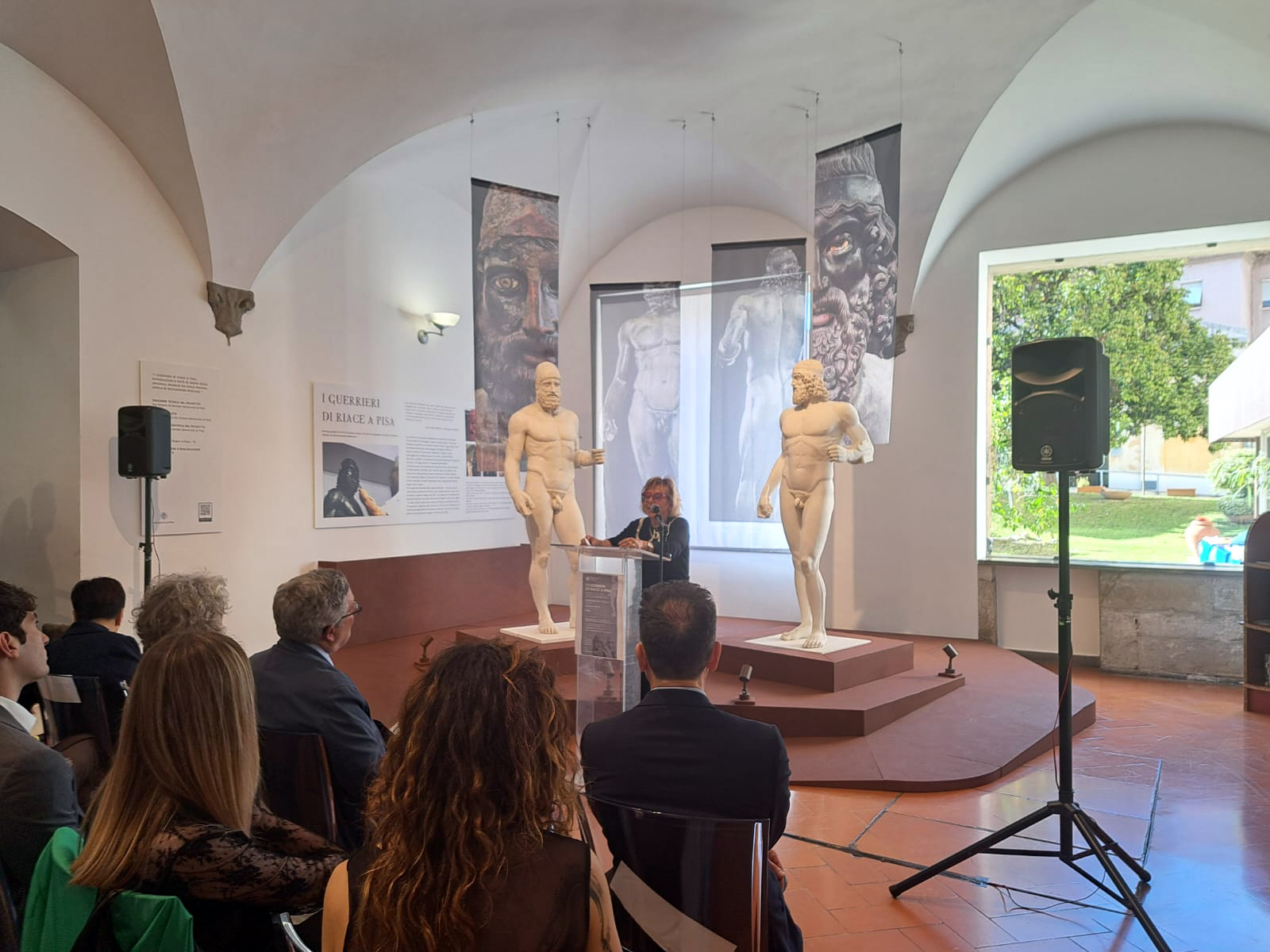
The story of the Riace Warriors in Pisa has also been published as a volume by Pisa University Press, the University of Pisa’s publishing house and part of the Centro per l’Innovazione e la Diffusione della Cultura (CIDIC). The book I Guerrieri di Riace a Pisa. Esposizione di riproduzioni artistiche degli originali bronzei, opera di Bernardino Morsani, edited by Fulvia Donati Guerrieri, explores the context, significance, and production process of the replicas, offering the public a valuable resource for understanding the cultural importance of Bernardino Morsani’s work.
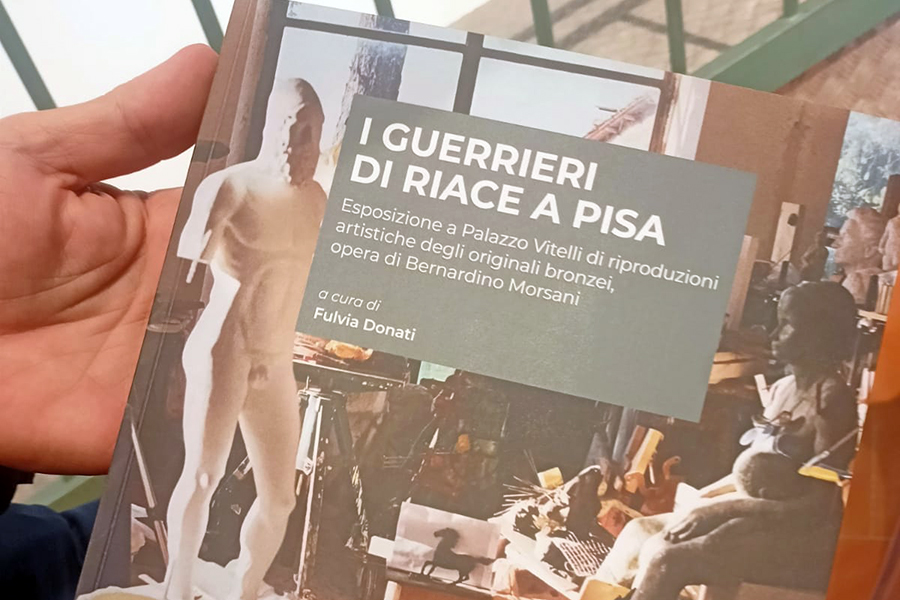
The opening ceremony was attended by Deputy Vice-Rector Giuseppe Iannaccone, Vice-Rector for Building and Real Estate Francesco Leccese, Professor Fulvia Donati from the University of Pisa, Professor Maurizio Paoletti from the University of Calabria, as well as Aurelia De Simone, who introduced the speeches, and members of the sculptor’s family, who unveiled the works. The two statues will remain on display at Palazzo Vitelli, and in the coming months it will be possible to book guided tours for schools.
